Forget Fed chairman Bernanke and his central planning cronies “considering additional asset purchases,” the unsettling truth is right before your eyes (charts via Bianco Research at The Big Picture):

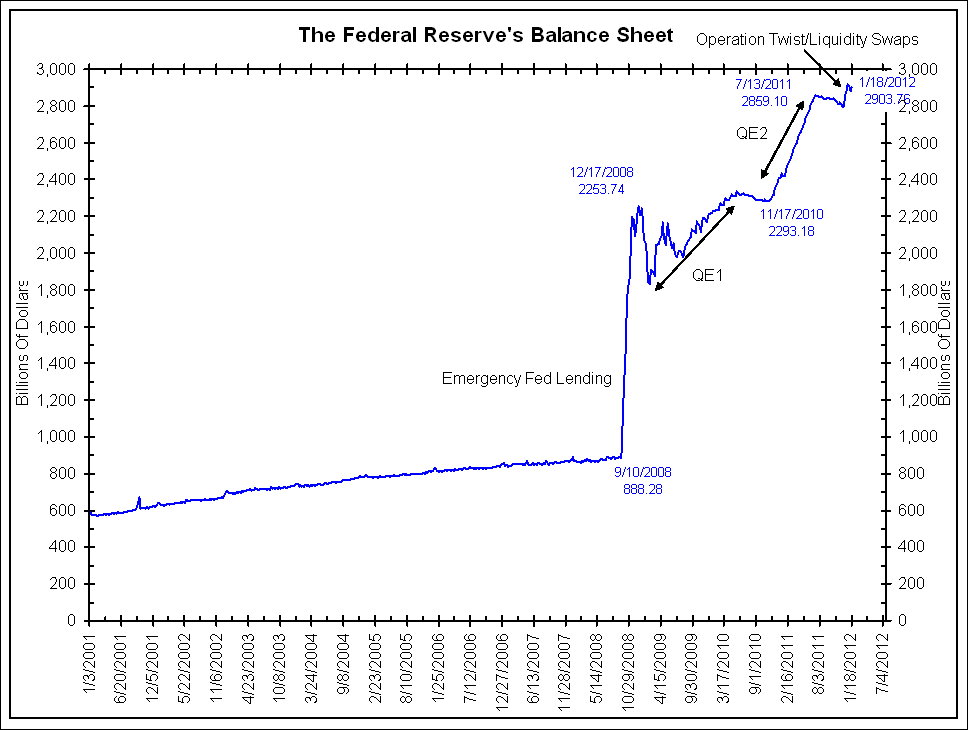
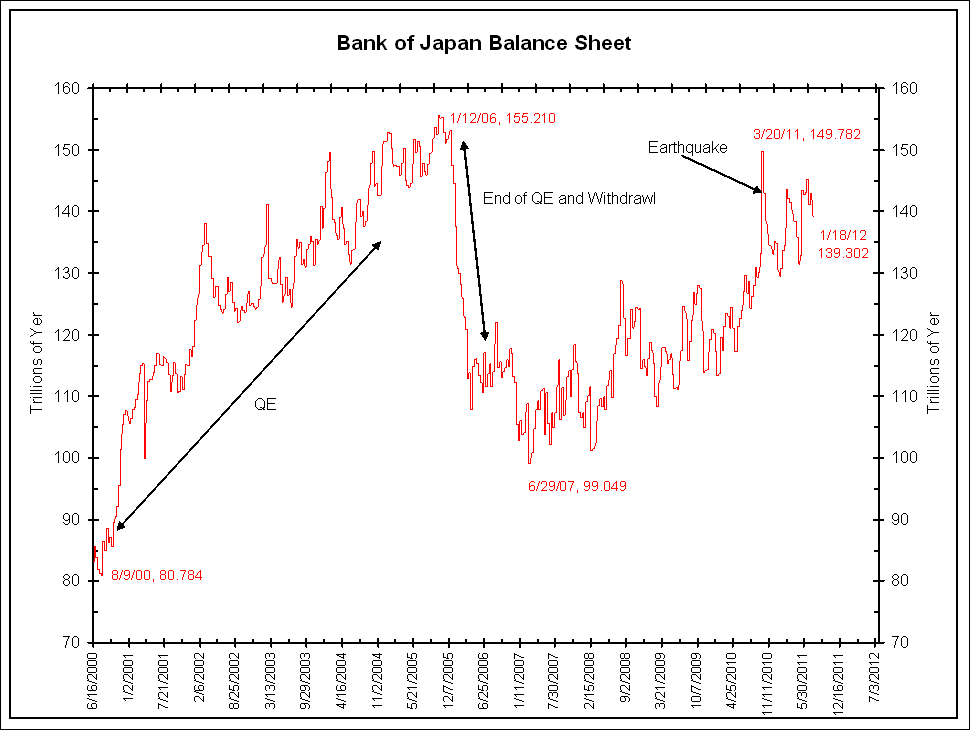
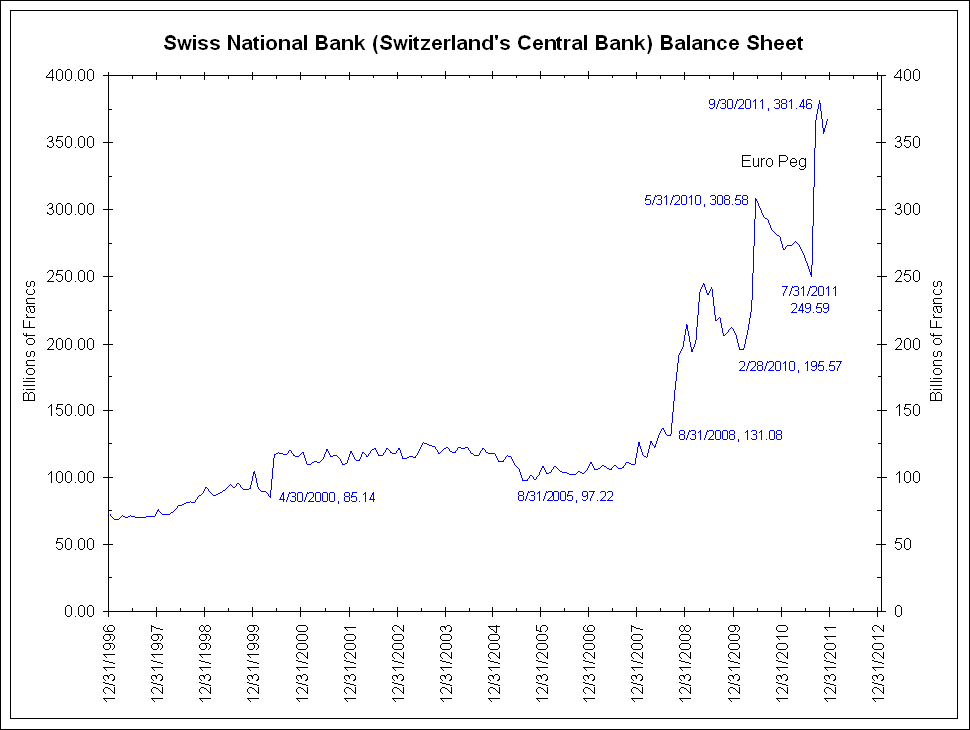
Here are some comparative charts (note the first is scaled in terms of U.S. dollars):

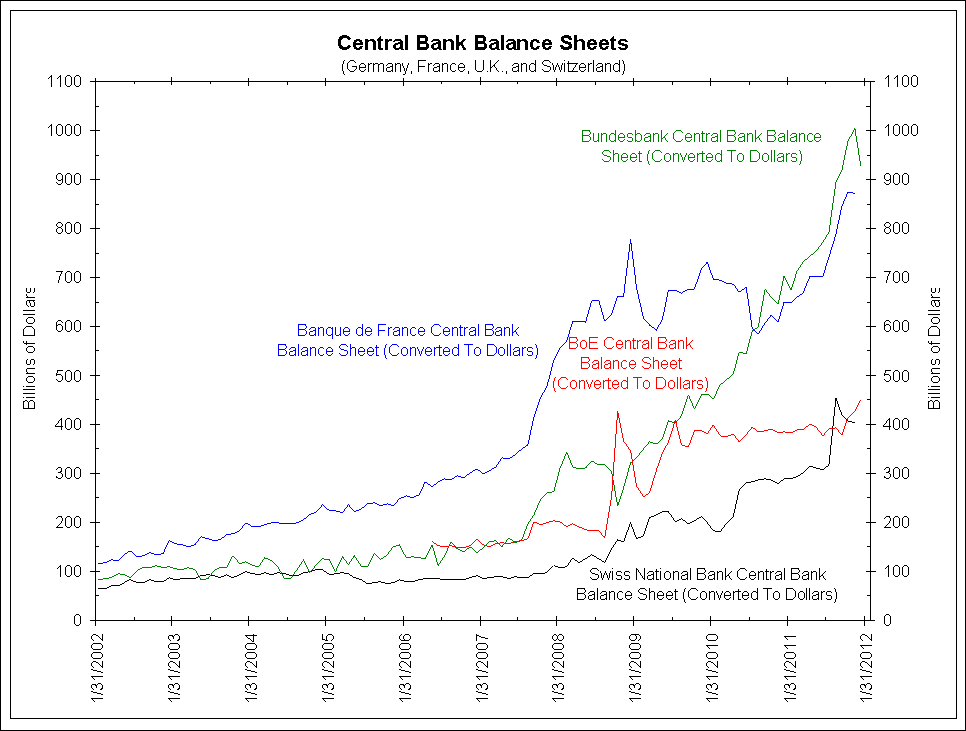
And perhaps the most worrisome chart of all:
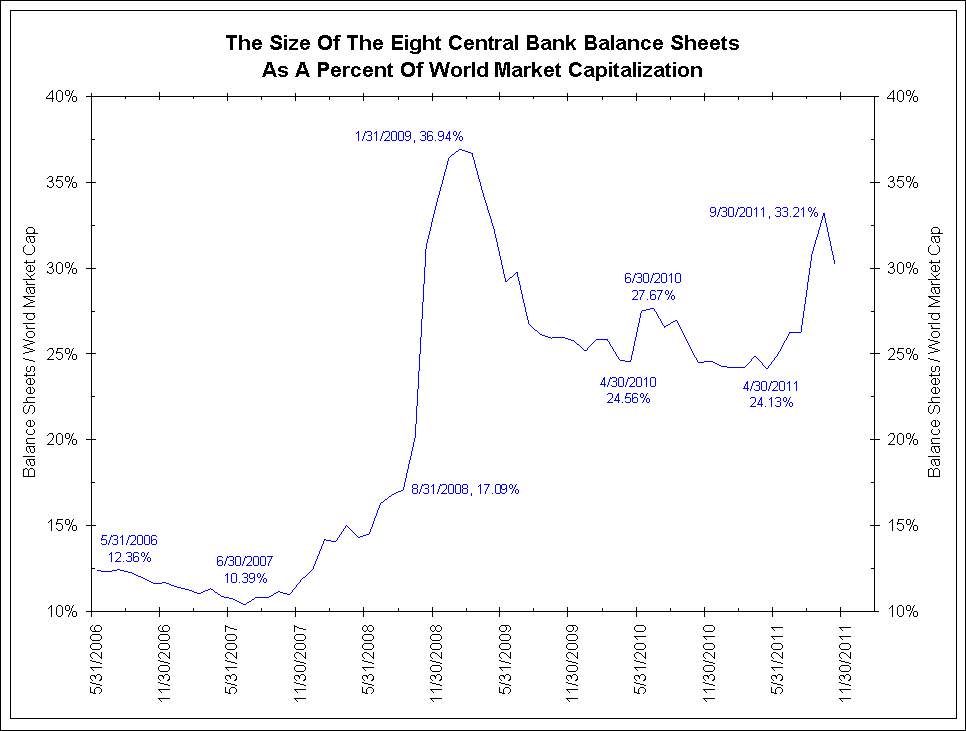
Prior to the 2008 financial crisis, the eight central bank balance sheets were less than 15% the size of world stock markets and falling. In the immediate aftermath of Lehman Brothers’ failure, these eight central bank balance sheets swelled to 37% the capitalization of the world stock market. But keep in mind that the late 2008/early 2009 peak was due to collapsing stock market values combined with balance sheet expansion via “lender of last resort” loans.
Recently, the eight central bank balance sheets have spiked back to 33% of world stock market capitalization. This has come about not by lender of last resort loans, but rather by QE expansion (buying bonds with “printed money“) even faster than world stock markets are rising.The fundamental question needs to be asked: after punting on a necessary market correction following the U.S. housing bubble and financial crisis, has the world economy been solely propped up by major central banks alone? Is it even possible to determine an answer to such an incredibly complex question?
Because money disperses through hands and economies in an unpredictable manner, one can’t possibly have enough knowledge to give an exact answer on the proposed question. While the banking sector has been practically zombified with multiple adrenaline shots of liquidity, it is certainly possible that some sectors are seeing market-driven growth despite increasingly crippling government regulation and cheap money slowly, but surely, finding its way to investors. Markets are forever resilient to some degree. But with all this cheap liquidity running amok, there is little doubt subsequent distortions in relative prices and production structures have occurred and will continue to till another correction inevitably manifests itself.
This is already apparent as governments, predisposed to rakish spending in economic times good and bad, are still able to fund themselves cheaply (with the exception of the Eurozone which still fumbles along despite increased cost of borrowing not including Greece) and draw more and more amounts of already precious capital from a deprived private sector.
Though inflation remains comparatively low in terms of consumer goods for most of the observed countries, excluding China whose falling prices are even more evidence of the property crack up boom presently occurring, eventually a turning point will be reached where the demand to hold cash balances falls in favor of accumulating goods and investments as time preferences heighten. This occurs on an individual subjective basis but behaves as a type of domino effect as increasing amounts of dollars/euros/yen/yuan etc. chase fewer goods. The chain reaction, while boosting some prices first, could very well be seen as a savior-like bubble that will be celebrated as a sign of a growing recovery. By the time the purveyors of the printing press realize what’s up, it could very well be too late. This is even further suspected given the recent disclosure of FOMC minutes from 2006 showing the complete incompetence Fed officials displayed with a bursting housing bubble right in front of their supposedly well-educated eyes.
As the global currency race to the bottom continues, one can be sure that the path to reaching sound economic footing will be further avoided as these policies remain in place. Much like Hayke ironically observed in 1932:
“Instead of furthering the inevitable liquidation of the maladjustments brought about by the boom during the last three years, all conceivable means have been used to prevent that readjustment from taking place; and one of these means, which has been repeatedly tried though without success, from the earliest to the most recent stages of depression, has been this deliberate policy of credit expansion.
“To combat the depression by a forced credit expansion is to attempt to cure the evil by the very means which brought it about; because we are suffering from a misdirection of production, we want to create further misdirection – a procedure that can only lead to a much more severe crisis as soon as the credit expansion comes to an end.
“It is probably to this experiment, together with the attempts to prevent liquidation once the crisis had come, that we owe the exceptional severity and duration of the depression. We must not forget that, for the last six or eight years, monetary policy all over the world has followed the advice of the stabilizers. It is high time that their influence, which has already done harm enough, should be overthrown.”---------------------------------------------------------
I should also mention my piece published at the Mises Institute today entitled "Mr. Rubenstein, You're No Adam Smith" which has gotten a load of compliments as well as my first piece published at PolicyMic.com yesterday entitled "Ron Paul's Impact Will Last Long After the Florida Debate." I am not overly satisfied with the Paul piece as what I saw as the best parts were edited out but the editor asked me to write it so I took a couple of hours to do so.
Tidak ada komentar:
Posting Komentar